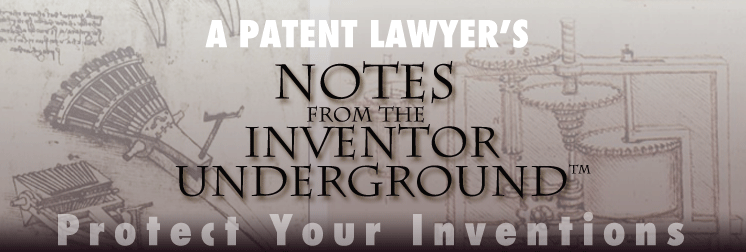Notes from the Inventor Underground

Careful — Your Continuation May Lose Priority
Patent and Technology trial lawyer Stan Gibson discusses what happens when the claims of the continuation application are not supported by the written description of the parent patent.
When preparing and filing patent applications and continuation applications for patents, it is important to make sure that your application contains a sufficient written description to support the claims of the patent. This is particularly important to ensure that a continuation application maintains priority from the date of the filing of the parent patent application. The recent case of Anascape, LTD. v. Nintendo of America, Inc., 601 F.3d 1333 (Fed. Cir. 2010), illustrates what happens when the claims of the continuation application are not supported by the written description of the parent patent.
In Anascape, the Federal Circuit reversed a district court’s finding of patent infringement against Nintendo for one of its game controllers. The Federal Circuit found that an intervening game controller sold by Sony invalidated the Anascape patent because the Anascape patent was a continuation patent that could not claim priority to the parent application. The Federal Circuit reasoned that in order to "obtain the benefit of the filing date of a parent application, the claims of the later-filed application must be supported by the written description in the parent in sufficient detail that one skilled in the art can clearly conclude that the inventor invented the claimed invention as of the filing date sought." Id. At 1335.
The Federal Circuit found that the written description of the parent patent was insufficient to support the claims of the continuation application. Therefore, the continuation patent was not entitled to the earlier priority date. As a result, the Federal Circuit found that the patent was invalid because of Sony’s intervening game controller.
There are some important lessons here from the Anascape case. First, when helping to draft the parent application, the inventor should be as expansive as is reasonable during the initial drafting of the specification, paying particular attention to the written description. The drafting of the parent application as it pertains to the invention will set the outer boundaries of potential coverage — with the corresponding consequences — for later continuation applications.
Second, the inventor should be realistic in any efforts to broaden the claims through continuation-practice. When drafting claims that may have disputable issues of priority dates, the inventor should keep in mind the impact of intervening prior art that could invalidate the patent. Accordingly, it is important to include at least some claims that are more likely to have solid priority arguments if later litigation is necessary.
 Los Angeles Real Estate Litigation Lawyer Jeffer Mangels Butler & Mitchell LLP Home
Los Angeles Real Estate Litigation Lawyer Jeffer Mangels Butler & Mitchell LLP Home

